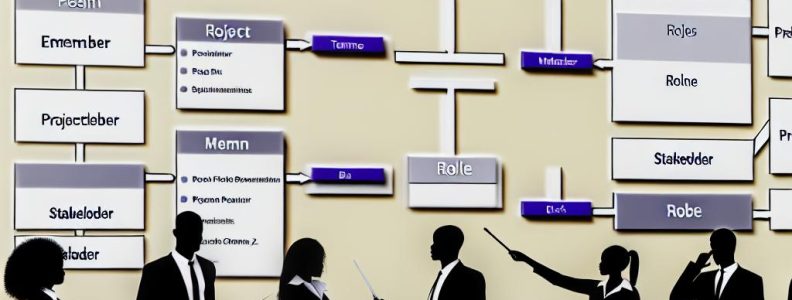Understanding PRINCE2 Roles and Responsibilities
PRINCE2, an acronym for Projects IN Controlled Environments, is one of the most prevalent project management methodologies globally. It offers a structured framework that guides project managers in effectively managing projects while maintaining a controlled environment. Central to this methodology is the emphasis on defining roles and responsibilities, which fosters a culture of clarity and accountability among the team members. This document delves into various roles established by PRINCE2, outlining their responsibilities and illustrating how they contribute to the project’s overall success.
The PRINCE2 Project Management Team Structure
PRINCE2 employs a systematic approach in delineating roles within the project management team, each role tailored with specific responsibilities designed to meet the project’s goals with precision. This section outlines the primary roles and responsibilities as defined by the PRINCE2 methodology.
The Project Board
The Project Board serves as the supreme decision-making unit within the PRINCE2 framework. Its composition is both strategic and balanced, incorporating individuals with varied perspectives and expertise to ensure the project’s alignment with organizational objectives and user needs.
Executive: This role is pivotal as it bears accountability for the project’s overall success. The Executive is tasked with ensuring the project’s alignment with the organization’s strategic goals and business justifications. They assess the project’s viability and ensure that it remains a sound investment throughout the project lifecycle.
Senior User: Representing the end-users’ interests, the Senior User ensures that the final product effectively meets user requirements and contributes to the benefits realization. They are responsible for communicating user needs and keeping the project aligned with those needs throughout its execution.
Senior Supplier: This role ensures that the actual products delivered meet the quality standards expected by the organization. Senior Supplier liaises with external suppliers and internal production teams, guaranteeing that resources are optimal, and deliverables meet the agreed-upon quality and timelines.
The Project Manager
In PRINCE2, the Project Manager is the pivotal role, responsible for the project’s day-to-day management. This individual acts as the nerve center for planning, execution, and monitoring of project activities. They communicate with the Project Board to ensure that the work aligns with organizational rules and objectives. Risk and issue management also fall under their purview, where they must proactively identify, analyze, and mitigate potential risks and resolve issues that arise to maintain project integrity.
The Team Manager
While the Project Manager maintains an oversight role, the Team Manager is focused on managing the nitty-gritty of product development. Tasked with transforming plans into delivery, the Team Manager directs actual production processes, ensuring that deliverables are completed within the constraints specified by the Project Manager. They work closely with team members to ensure that daily tasks align with the larger project objectives.
The Project Assurance Roles
Quality assurance underpins PRINCE2, where designated roles within the project entail maintaining high standards in product development and delivery:
– Business Assurance: Business Assurance guarantees that the project’s management and product align with organizational business goals and deliver substantial value.
– User Assurance: This role focuses on verifying that user requirements are accurately reflected in the products, ensuring the end results satisfy user needs.
– Supplier Assurance: Ensures that all products supplied by external vendors comply with quality agreements, thereby guaranteeing that their standards align with the project expectations.
The Project Support Role
The Project Support role acts as the backbone of project operations, providing essential support to the Project Manager, particularly in technical domains. This role encompasses configuration management, document management, and support in using project management software tools. Their assistance ensures that the Project Manager has access to accurate data and documentation, which facilitates effective decision-making.
Defining Responsibilities in PRINCE2
A cornerstone of the PRINCE2 methodology is the explicit definition of each role and its associated responsibilities. This characteristic ensures an understanding among team members about their contributions to project success, thereby minimizing the occurrence of conflicts and confusion. It establishes a structured hierarchy critical for administering complex projects effectively. Each role, clearly defined and assigned, helps in streamlining project processes, optimizing resource utilization, and maintaining focus on achieving project objectives.
Defining responsibilities is an ongoing process. It enables project participants to comprehend their roles within the broader context of the project, encouraging proactive engagement and accountability. A precise understanding of responsibilities alleviates ambiguities and sets clear expectations, fostering a conducive environment for project success.
For organizations and individuals considering the adoption of PRINCE2, it is vital to assign roles mindful of individual expertise and capacity to perform the associated duties. Consideration of personal skills and experience ensures that each role is fulfilled effectively, contributing to efficient project execution. Further information on PRINCE2 can be obtained from accredited training organizations, providing comprehensive guidance, resources, and certification for professionals aiming to adeptly implement PRINCE2 methodologies.
In summary, the PRINCE2 framework incorporates a detailed role and responsibility definition strategy essential for the success of any project. Each role plays a pivotal part in the project’s lifecycle, contributing unique value and facilitating coherent, streamlined operations. By adopting PRINCE2, organizations can harness its structured methodology to ensure project success within controlled environments.

